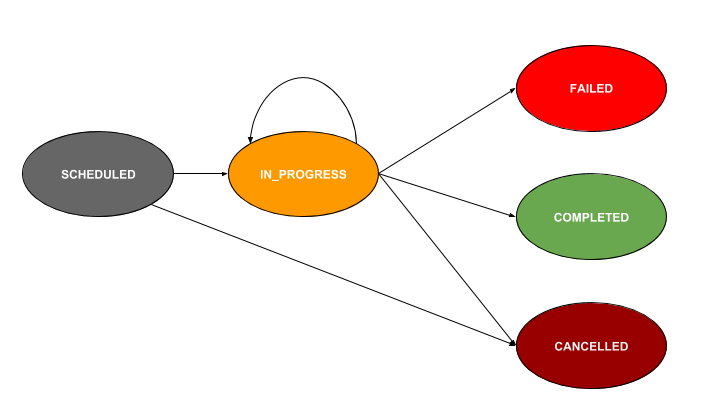Workflow and Task Status
The workflow and task statuses are crucial to understanding the execution mechanism in Conductor. You can check a workflow execution’s current status and task status from the Conductor UI or using API.
Workflow status
Once started, a workflow execution will either be in an ongoing or terminal status.
| Status | Description |
|---|---|
| RUNNING | The workflow is in progress. |
| PAUSED | The workflow is paused by a user or external event, and is waiting for a manual action to resume. |
| COMPLETED | Terminal status where all the tasks in the workflow are completed. |
| TIMED_OUT | Terminal status where one of the workflow tasks has timed out. |
| TERMINATED | Terminal status where an incomplete workflow has been terminated by a user, event, or another workflow. |
| FAILED | Terminal status where the workflow has encountered an error and failed. You can retry the workflow execution from the failed task. |
Task state transitions
During a workflow execution, each task will go through the state transitions illustrated in the figure below. These states roughly correspond to the nine task statuses in Conductor.

Task status
Each task will be in a scheduled, ongoing, or terminal status.
| Status | Description |
|---|---|
| SCHEDULED | The task has been scheduled to be picked up by a worker. |
| IN_PROGRESS | The task is being executed by a worker. |
| SKIPPED | The task is skipped without executing, and the workflow continues to the subsequent tasks. Occurs if the Skip Task API is used during a currently running workflow. |
| TIMED_OUT | The task times out without being completed. Occurs if the task has been configured with the following timeout parameters in its task definition:
|
| CANCELED | The scheduled task has been canceled without being completed because the workflow has been terminated. |
| FAILED | The task failed to complete due to an error, and the workflow can be retried from the failed task. |
| FAILED_WITH_TERMINAL_ERROR | The task failed to complete due to an error and cannot be retried. |
| COMPLETED_WITH_ERRORS | The task has encountered some errors but is completed. Occurs only when a task is set as optional in the workflow definition and fails during execution. The workflow will continue even when there are errors. |
| COMPLETED | The task has been successfully completed without any errors. |